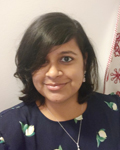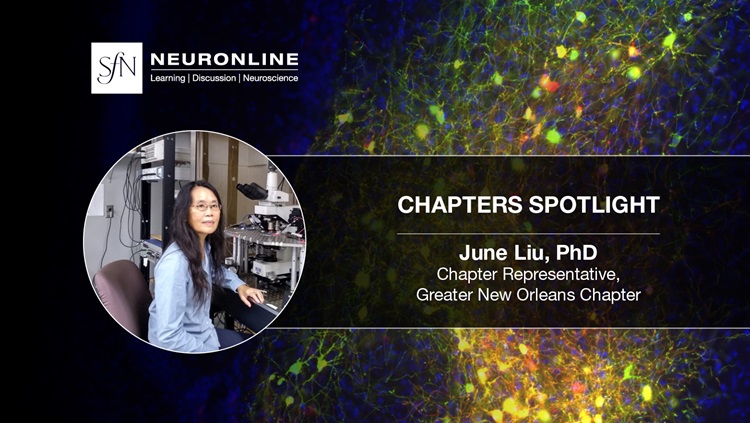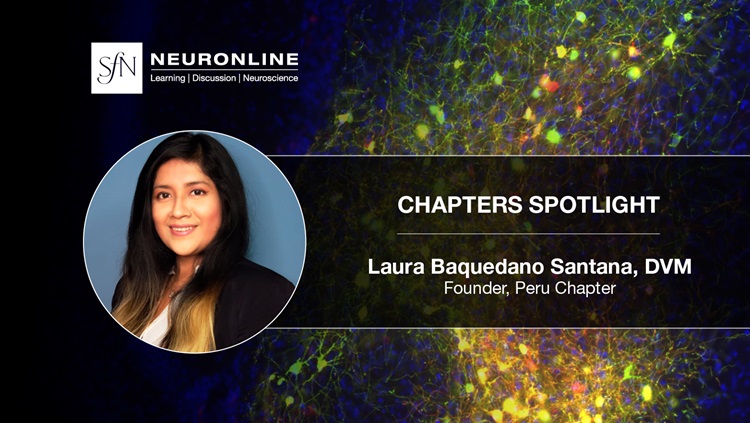Jaya Viswanathan, PhD, is a research program analyst (KGS contractor) in the Division of Neuroscience at the National Institute on Aging (NIA). Viswanathan also is the author and illustrator of a neuroscience and neuroart book for children, Baby Senses: A Sensory Neuroscience Primer for All Ages. Here, she explores how she planned and executed two Brain Awareness Week (BAW) events with the goals in mind to develop neuroscience knowledge in younger audiences, as well as engage the local community in discussions about the brain.
Brain Awareness Week (BAW), since its inception in 1996, has been an annual week-long celebration of the brain. It is a global campaign to increase public awareness of brain research, explore how research impacts everyday life and society, reduce the stigma related to disorders of the brain, and educate audiences on the recent progress in brain research. It presents researchers who are passionate about outreach with the epitome of opportunities to get nontechnical, lay audiences excited about the brain and to engage with a wide audience about their science.
I’ve been participating in BAW activities with various organizational and university programs as well as SfN chapters since 2010 and have always been inspired by the thoughtfulness, creativity, and effort it takes to put together these engagement events.
As a neuroscientist and recent author of Baby Senses: A Sensory Neuroscience Primer for All Ages, I was especially excited for my first BAW since my book release. Instead of merely contributing to or volunteering with existent programs, I was interested in leveraging my author platform to develop neuroscience knowledge resources for young audiences. I was also keen on engaging my local community in discussions about the brain and sharing my passion for it. I ended up doing both, and each endeavor turned out to be a very fulfilling adventure on its own!
In partnership with a fellow children’s author, Karen White Porter, who specializes in creating social-emotional learning books for children, I co-created a series of videos with Ada the puppet asking me neuroscience related questions that we released each day of the week for Brain Awareness Week on various social media platforms.

These videos are targeted at a very young audience – around age four or so – as they start wondering about the world around them, and we used various narrative and story-telling techniques to make the complex content relatable to children. By turns serious, fun, silly, and humorous, both Karen and I are hopeful that these videos will spark the joy of science in a young audience.
To engage more fully with my community, I brainstormed with friends who have deep connections to the neighborhood and communities we all live, work, and play in. In collaboration with my friend based in Cleveland Park, D.C., we decided to start with the simplest format: a neuroscience and art salon at the local library. For this conversation, we further enlisted the help of Kate Woodsome, Pulitzer Prize-winning journalist, on creating a relatable neuroscience outreach event. Her insight and creative input made for a truly memorable event for the audience and an expansive conversation that I thoroughly enjoyed.

The videos and discussions that arose from both these events are freely available on the Baby Senses resources page. Based on these two events and my other outreach experiences, I wanted to share some tips that have greatly helped me in organizing successful events and resources for nontechnical audiences:
- Seek out advice from people who have complimentary skills to your own to put together events and resources that will have broad appeal.
- Find local organizations that will help you advertise and publicize your event – local libraries, local literacy groups, philanthropic and science organizations are some examples.
- Event venues can be expensive – in the absence of sponsorship, research and contact the same type of organizations about event spaces that can work for the kind of event you are trying to put together.
- Research local opportunities to advertise and publicize your event. Social media is great for publicity, but in addition, we had very good luck with neighborhood email listservs, event listings with local publications, art/science organizations, etc.
- On the day of the event, remember to set up early and plan for some refreshments for the attendees and volunteers (as the location allows, for example, libraries generally do not allow alcoholic beverages).
- Be welcoming and encourage questions of all types, even if you are not sure of the answer. One of the goals of these platforms is also to inform a lay audience that the answer is not always apparent, even to the “experts.” It is important that all questions be encouraged to foster curiosity.
- After the event, remember to thank everyone who helped you pull it off, and do necessary follow-up. In my case, this also included working to update my website to ensure that all discussions were published and accessible in one place.
While the narrative in this article may portray that the event execution went smoothly, there were several bumps along the road, both technical and otherwise. I am truly grateful to my collaborators who made these events happen – Karen Porter, Kate Woodsome, and Jen Dickey. If I may emphasize one thing in this article, it is the power of collaborating with exceptional and kind people whose mission aligns with your own.
I wish you all the best in your own outreach adventures!








